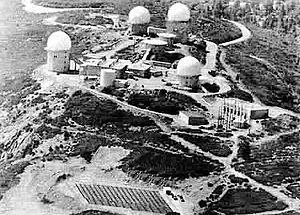
Tyndall Air Force Base is a United States Air Force Base located 12 miles (19 km) east of Panama City, Florida. The base was named in honor of World War I pilot 1st Lt. Frank Benjamin Tyndall. The base operating unit and host wing is the 325th Fighter Wing of the Air Combat Command (ACC). The base hosts 2,902 active duty members. In October 2018, Hurricane Michael caused significant damage to the base.
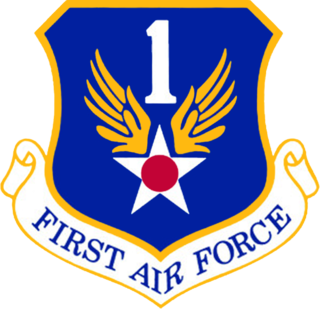
The First Air Force is a numbered air force of the United States Air Force Air Combat Command (ACC). It is headquartered at Tyndall Air Force Base, Florida. Its primary mission is the air defense of the Contiguous United States (CONUS), United States Virgin Islands and Puerto Rico. Since May 2022, it also provides the Air Force contribution to United States Space Command, as Air Forces Space (AFSPACE), including support functions for NASA human space flight.

The Alaskan Air Command (AAC) is an inactive United States Air Force Major Command originally established in 1942 under the United States Army Air Forces. Its mission was to organize and administer the air defense system of Alaska, exercise direct control of all active measures, and coordinate all passive means of air defense. In addition, the command also supported Strategic Air Command elements operating through and around Alaska. It was redesignated Eleventh Air Force on 9 August 1990 and, concurrently, status changed from a major command of the United States Air Force to a subordinate organization of Pacific Air Forces.

The Southeast Air Defense Sector (SEADS), was a unit of the US Air Force located at Tyndall Air Force Base near Panama City, Florida. It provided air defense and surveillance of the southeastern region of the US. SEADS closed in winter 2005, giving up surveillance and control of their airspace to the Eastern Air Defense Sector (EADS) and the former Northeast Air Defense Sector (NEADS).

Aerospace Defense Command was a major command of the United States Air Force, responsible for air defense of the continental United States. It was activated in 1968 and disbanded in 1980. Its predecessor, Air Defense Command, was established in 1946, briefly inactivated in 1950, reactivated in 1951, and then redesignated Aerospace rather than Air in 1968. Its mission was to provide air defense of the Continental United States (CONUS). It directly controlled all active measures, and was tasked to coordinate all passive means of air defense.
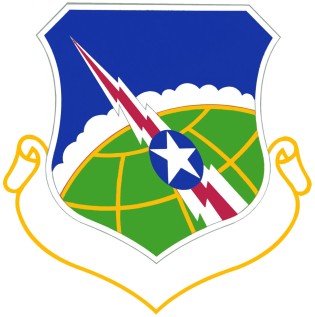
The 23rd Air Division is an inactive United States Air Force intermediate echelon command and control organization. It was last assigned to First Air Force, Tactical Air Command (ADTAC). It was inactivated on 1 July 1987 at Tyndall Air Force Base, Florida.
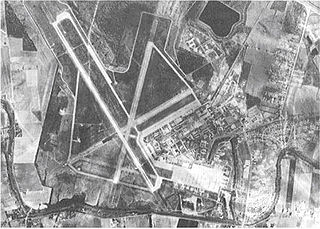
England Air Force Base is a former United States Air Force base in Louisiana, located 5 miles (8.0 km) northwest of Alexandria and about 170 miles (270 km) northwest of New Orleans. Originally known as Alexandria Army Air Base, on 23 June 1955 the facility was renamed England Air Force Base in honor of Lt Col John Brooke England (1923–1954).
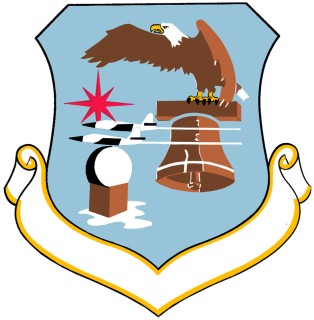
The 20th Air Division is an inactive United States Air Force organization. Its last assignment was with Tactical Air Command at Tyndall Air Force Base, Florida where it was inactivated on 1 March 1983.

The 125th Fighter Wing is a unit of the Florida Air National Guard, stationed at Jacksonville Air National Guard Base, Florida. If activated to federal service with the United States Air Force, the 125 FW is operationally gained by the Air Combat Command (ACC).

The 144th Fighter Wing is a unit of the California Air National Guard, stationed at Fresno Air National Guard Base, California. As part of the Air Reserve Component of the United States Air Force, the wing is operationally gained by the Air Combat Command.

The 325th Fighter Wing is a wing of the United States Air Force based in Tyndall Air Force Base, Florida.
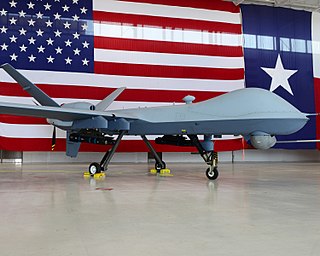
The 147th Attack Wing is a unit of the Texas Air National Guard, stationed at Ellington Field Joint Reserve Base, Houston, Texas. If activated to federal service, the Wing is gained by the United States Air Force Air Combat Command.

The 171st Air Refueling Squadron is a unit of the Michigan Air National Guard's 127th Wing located at Selfridge Air National Guard Base, Michigan. The 171st is equipped with the KC-135T Stratotanker.

The 159th Fighter Squadron is a unit of the Florida Air National Guard's 125th Fighter Wing located at Jacksonville Air National Guard Base at Jacksonville International Airport, Florida. The 159th is currently equipped with the F-15C and F-15D Eagle and is slated to transition to the F-35A Lightning II in 2024.

The Spokane Air Defense Sector (SPADS) is an inactive United States Air Force organization. Its last assignment was with the Air Defense Command 25th Air Division at Larson Air Force Base in Grant County, Washington

The Duluth Air Defense Sector (DUADS) is an inactive United States Air Force organization. Its last assignment was with the Air Defense Command 29th Air Division, being stationed at Duluth Airport, Minnesota. It was inactivated on 1 April 1969.

The 4756th Air Defense Wing was the designation of two different discontinued United States Air Force organizations. Both wings were stationed at Tyndall Air Force Base, Florida and fulfilled similar missions. The first was organized in 1957 when Air Defense Command (ADC) assumed responsibility for managing Tyndall from Air Training Command and focused on weapons testing and development and evaluating the readiness of ADC fighter units. The wing also controlled a ground control intercept radar squadron. This wing was discontinued in 1960 and its mission transferred to its parent 73d Air Division.

The Air Defense Weapons Center is an inactive unit of the United States Air Force, last stationed at Tyndall Air Force Base, Florida. It was last assigned to First Air Force, Tactical Air Command, and was inactivated on 12 September 1991

The 186th Airlift Squadron is a unit of the Montana Air National Guard 120th Airlift Wing located at Great Falls International Airport, Montana. The 186th is equipped with the C-130H Hercules.

The 120th Airlift Wing is a unit of the Montana Air National Guard, stationed at Great Falls Air National Guard Base at Great Falls International Airport, Montana. If activated to federal service, the Wing is gained by the United States Air Force Air Mobility Command.


